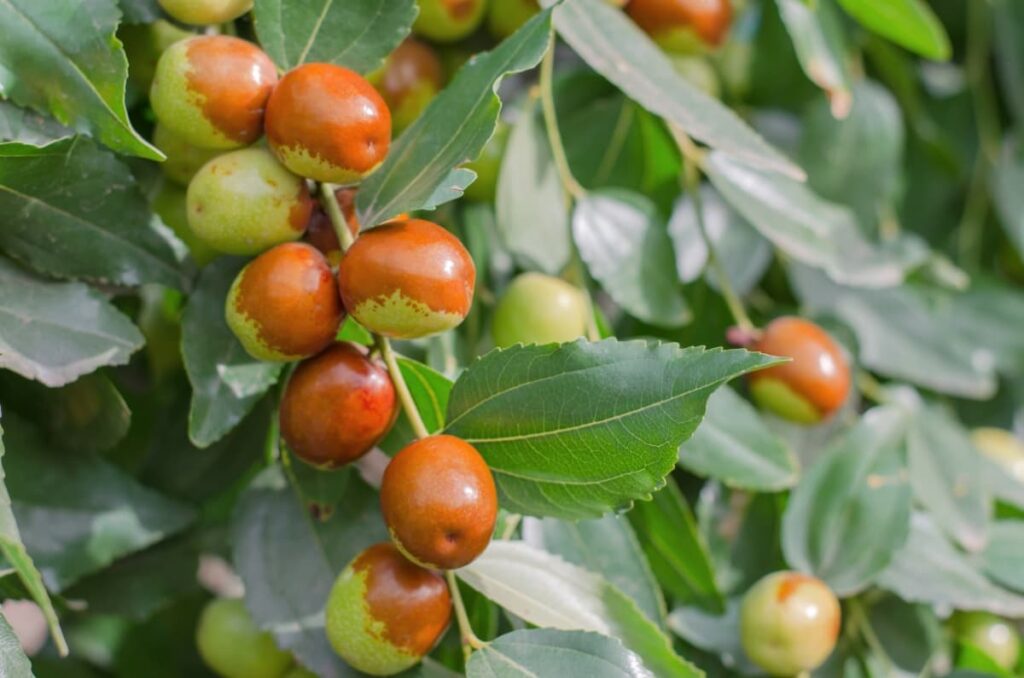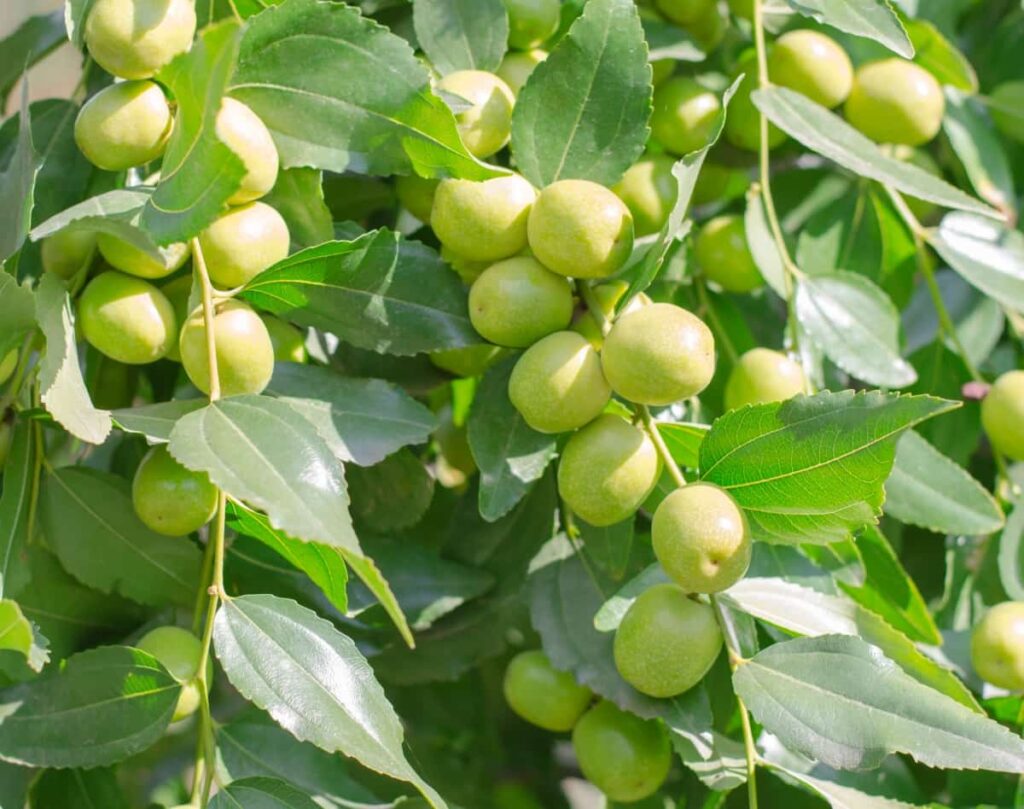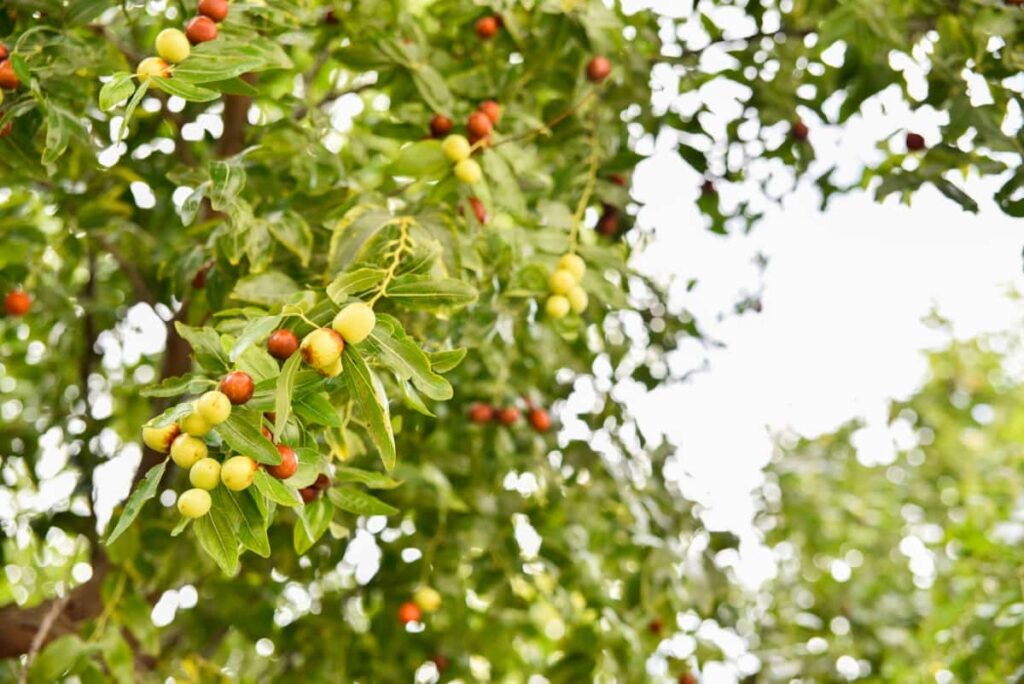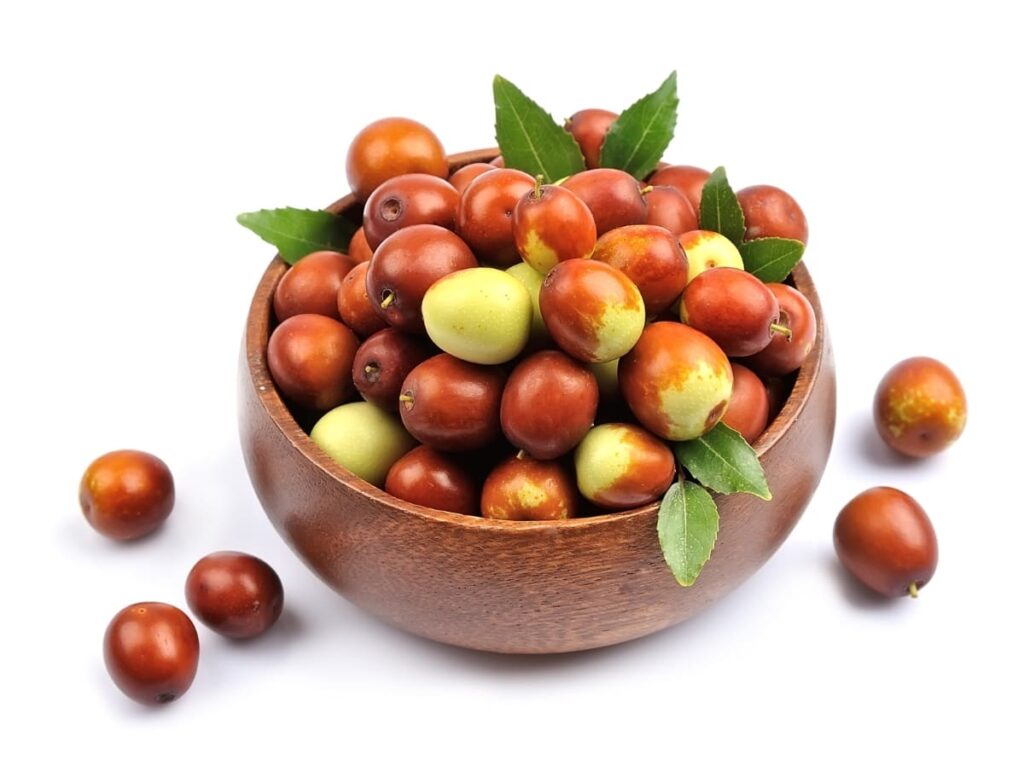Ber or Indian jujube (Ziziphus mauritiana) is a remarkable fruit crop that thrives in arid conditions. Not only does Ber farming offer economic opportunities, but it also plays a significant role in agriculture.

Guide to Ber Farming
Significance in Agriculture and Economy
Ber farming holds great significance in both the agricultural sector and the economy. This hardy fruit crop has numerous benefits that contribute to its importance. Ber farming provides income opportunities for farmers. Moreover, the demand for Ber products such as dried Berries or jams creates additional avenues for value addition and entrepreneurship.
Common Varieties and Their Characteristics
There are several varieties of Ber available for cultivation, each with its unique characteristics. Some commonly grown varieties include Kaithli, Gola Safeda, Banarasi Karaka, Umran Sindhuriya, and Chhuhara Ber. When selecting a variety for cultivation, factors such as yield potential, disease resistance, and taste preferences in the local market should be considered.
Selection Criteria for Cultivation
Several factors should be considered when selecting Ber varieties for cultivation. It is important to consider the climate and geographical conditions of the region. Consider the market demand for different Ber varieties. Some varieties may be more popular among consumers or have higher commercial value, so it makes sense to prioritize these varieties in order to maximize profits.
Another important consideration is disease resistance. Additionally, consider the growth habit and yield potential of different varieties. Consider factors such as labor availability, water availability, and overall farming infrastructure when selecting Ber varieties for cultivation.
Climate and Soil Requirements
Optimal Climate Conditions for Ber
The success of Ber farming largely depends on the climate conditions in which it is grown. This fruit thrives in arid and semi-arid regions with hot summers and mild winters. When it comes to soil requirements, well-drained sandy loam or loamy soils are considered best suited for Ber cultivation.
Soil Types for Ber Planting
Ber trees can tolerate a wide range of soil types, and they thrive best in well-drained sandy loam or clay loam soils. This fruit crop prefers a slightly alkaline soil pH ranging from 7-8. To further optimize your Ber plantation’s success rate, consider conducting a soil test beforehand.
Propagation Techniques
Seed Propagation and Its Challenges
When using seeds to propagate Ber trees, it is important to select high-quality seeds from healthy and disease-free fruits. The seeds should be cleaned thoroughly before sowing to remove any debris or pulp. After cleaning, they can be soaked in water overnight to enhance germination rates.
However, one challenge with seed propagation is the unpredictability of offspring characteristics. Since insects cross-pollinate Ber trees, there is a high chance of genetic variability among the progeny. This means that the resulting plants may not possess all desired traits, such as fruit size or taste. To overcome these challenges, many farmers opt for grafting methods instead of relying solely on seed propagation.
Grafting Methods for Improved Varieties
Grafting is a popular technique used to propagate improved varieties of Ber fruit trees. It involves joining the desired scion (the upper portion carrying the chosen variety) with a rootstock (the lower portion providing vigor and disease resistance). There are several grafting methods commonly employed in Ber farming.
One such method is whip or tongue grafting, where both the scion and rootstock are cut diagonally to create matching tongues that fit together snugly. Budding is another popular technique used for grafting Ber trees. It involves inserting a bud from the selected variety into an incision made on the rootstock’s bark. The bud then grows into a new shoot that carries all the desired traits of the chosen variety.
Planting and Cultivation
Planting Season and Spacing Guidelines
Planting season plays a vital role in the success of Ber farming. In general, the ideal time for planting Ber trees is during the monsoon season or at the beginning of winter. The recommended spacing between two Ber plants is around 5-6 meters apart. The best time to prune is during the dormant season, preferably after harvest but before new growth begins in spring.
Irrigation and Water Management Practices
Proper irrigation is essential during the initial stages of planting, as it helps establish a strong root system. Drip irrigation systems or sprinkler systems are commonly used for watering Ber orchards. By carefully monitoring and adjusting irrigation schedules based on weather conditions and plant requirements, farmers can ensure healthy growth and good yields from their Ber orchards.
In case you missed it: The Ultimate Guide to Growing Citron: Propagation, Planting, Pruning, and Care

Fertilization and Nutrient Management
Soil Fertility Requirements
To ensure fruit production, it is important to understand the soil fertility requirements of these hardy fruit crops. Ber trees have specific demands when it comes to soil nutrients. They thrive well in soils with good organic matter content, adequate nitrogen levels, and balanced ratios of phosphorus and potassium.
Organic and Inorganic Fertilization Strategies
Organic fertilization is considered more sustainable and environmentally friendly. Organic options include well-rotted farmyard manure or compost applied to the planting hole before transplanting seedlings. On the other hand, inorganic fertilizers provide an immediate nutrient boost to plants. Inorganic fertilizers should be used judiciously based on nutrient deficiencies identified in the soil analysis report.
Pest and Disease Management
Common Pests and Diseases Affecting Ber Trees
The most common pest affecting Ber trees is the fruit fly. These insects lay their eggs in the maturing fruits, causing damage and leading to premature drop or rotting. To combat this pest, regular monitoring and timely application of appropriate insecticides or biological control methods are necessary.
Another troublesome pest for Ber farmers is aphids. Ber trees are also susceptible to fungal diseases such as powdery mildew and anthracnose. By understanding these common pests and diseases affecting Ber trees, farmers can implement appropriate management strategies that contribute to healthier crops with higher yields.
Integrated Pest Management (IPM) Approaches
IPM focuses on using a combination of different methods to control pests while minimizing harm to the environment and human health. One important aspect of IPM is pest monitoring. Cultural practices also play a role in IPM. Implementing crop rotation and intercropping can disrupt pest life cycles, making it harder for them to establish large populations.
Biological control measures are another component of IPM. This involves introducing natural enemies like beneficial insects or predators that feed on pests. By encouraging these allies, farmers can reduce pesticide use while effectively controlling pests.
Harvesting and Post-Harvest Handling
Indicators of Maturity and Harvesting Techniques
The key indicator is their color. As they ripen, the fruits change from green to yellowish-green or even red, depending on the variety. Apart from color, touch can also help in assessing maturity. Ber fruits should feel firm but not too hard when gently pressed with your fingers. Once you have determined that your Ber fruits are ready for harvesting, it’s essential to use proper techniques to avoid damage during this process. Handpicking is commonly practiced as it ensures minimum bruising and injury to the fruit.
Post-Harvest Preservation and Value Addition
Proper post-harvest handling techniques can significantly extend the shelf life of these fruits and add value to your produce. The effective method for preserving Ber fruits is through dehydration. Another popular way to add value to harvested Ber fruits is by processing them into jams, jellies, or preserves. In addition to preservation methods, there are several ways farmers can add value to their Ber produce. One option is to produce Ber-based juices or beverages that offer a refreshing and nutritious alternative for consumers.
In case you missed it: The Ultimate Guide to Growing Tangelo Trees: Expert Advice on Planting, Care, and Harvesting

Economic Aspects and Market Potential
Cost of Ber Farming
The cost of Ber farming primarily depends on various factors such as land preparation, plant material, irrigation systems, fertilizers, pest management, labor costs, and post-harvest handling. These expenses can change based on location and management practices but are estimated to be around INR 50,000 to 75,000 per acre.
Yield Per Acre
Ber trees generally start bearing fruits 4-5 years after planting, with full production reaching around ten years. Under good management practices, you can expect an impressive yield of approximately 10 to 15 tons. However, this may vary depending on various factors such as climate conditions, soil fertility, cultivation practices, and pest management.
Ber Farming Profitability
The potential returns on investment can change based on different factors like crop management practices, market demand, and yield per acre. For an average yield of 10 tons or 10,000 kilograms of Ber fruit per acre, with an average market price of INR 25 per kilogram, your gross revenue would amount to INR 250,000. The net profit will be the subtraction of the higher end of estimated costs (INR 75,000) from your gross revenue (INR 250,000); you can expect a net profit of approximately INR 175,000 per acre.
In case you missed it: How to Grow Java Apple in Home Gardens: Ultimate Guide for Beginners

Conclusion
Ber farming plays a significant role in agriculture and contributes to the economy by providing income for farmers. It produces small round or oval-shaped fruits that are initially green but turn yellowish-brown when ripe. The fruit flesh is sweet and juicy, making it a favorite among many.
- Crops Grown in Summer Season: Best Choices for Summer Gardening
- Organic Pest Control for Tomato Farming
- How to Maximize Sheep Farming Profit
- Broccoli Varieties: Choosing the Right Cultivars for Your Farm
- How to Raise Pigs in Your Own Backyard: A Comprehensive Guide
- Budget Friendly Sheep Shed Ideas: Cheap and Low-Cost Tips
- How Much Do Cattle Farmers Make: Revenue Streams in Cattle Farming
- Management Pests and Diseases in Your Cotton Field
- Sheep Farming Business Plan for Beginners
